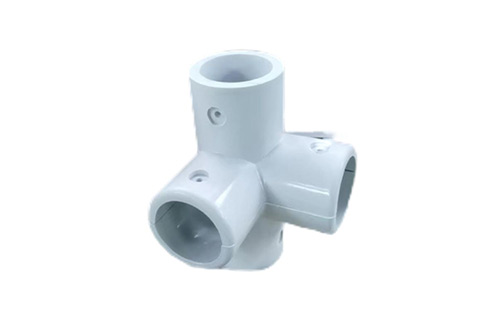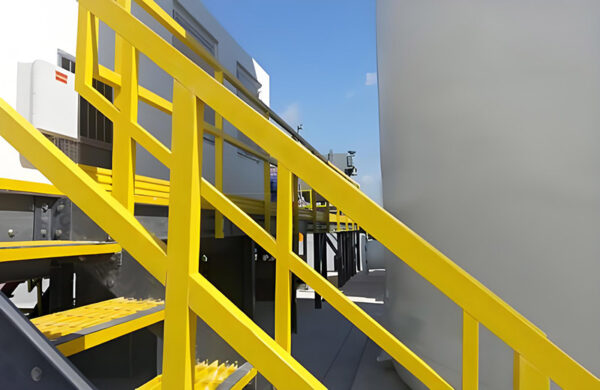
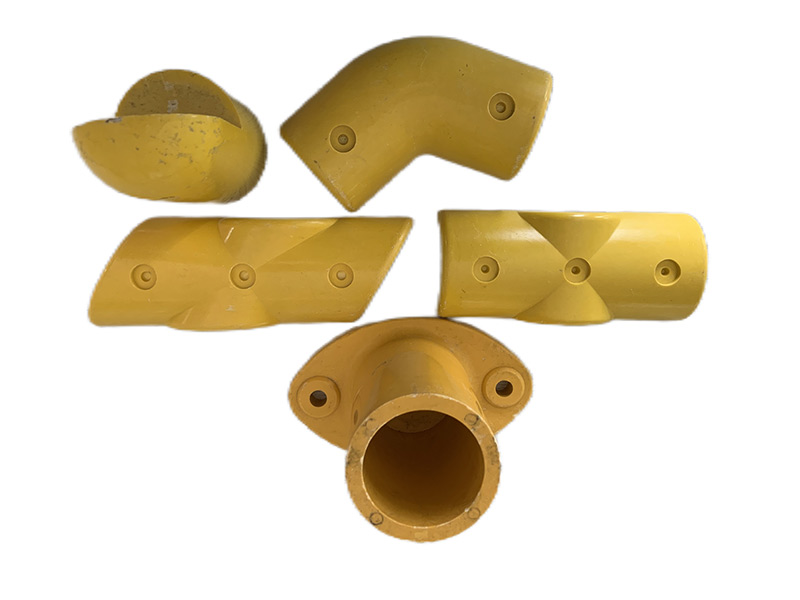
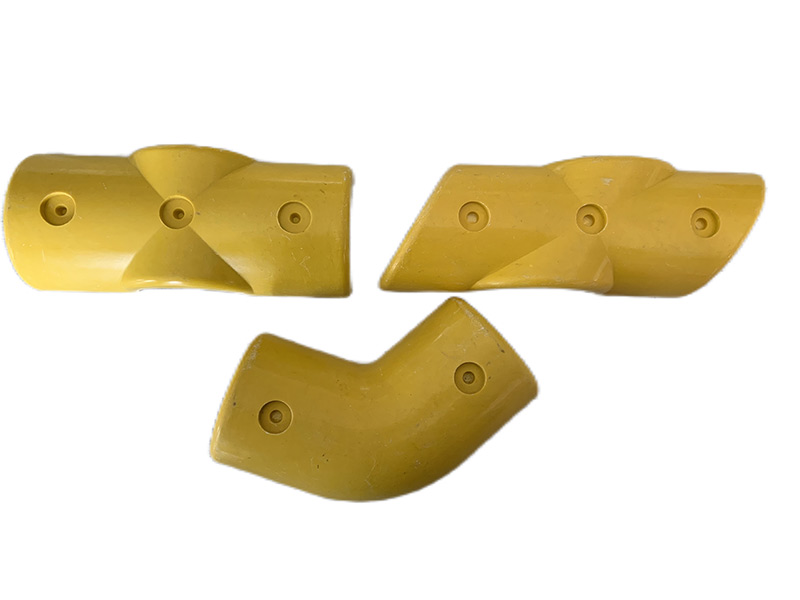
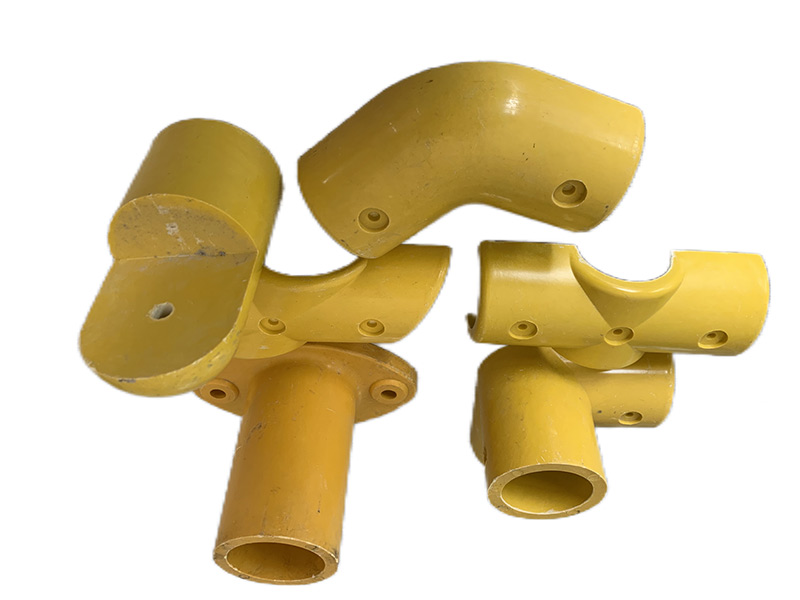

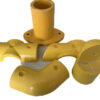




description
Rails: Horizontal components that users can grasp for support. FRP handrail rails are designed to be sturdy and durable.
Posts: Vertical supports that anchor the handrail system to the structure. Posts provide stability and support for the entire handrail structure.
Connectors: Fittings that join different sections of the handrail, including corners, angles, and straight runs. Connectors ensure a secure and rigid structure.
Base Flanges: Used to secure the handrail system to the ground or structure. Base flanges provide stability and support to the vertical posts.
Top Caps: Cover the upper surface of the handrail, offering a finished appearance and preventing water accumulation on the rail.
Mid-Rails: Optional horizontal components added between the top and bottom rails for additional safety and support.
Toe Plates or Kick Plates: Optional plates added to the bottom of the handrail to prevent objects from rolling or falling through the bottom.
Fasteners: Bolts, nuts, and other fasteners are used to securely attach various components together. Stainless steel or other corrosion-resistant fasteners are often preferred.
End Caps: Used to finish the ends of the handrail and prevent any sharp edges from being exposed.
Splice Plates: Plates used to connect two sections of the handrail system together, ensuring a secure and seamless connection.
Grating: In some applications, FRP grating may be used as part of the handrail system, providing a walking surface on platforms or walkways.
Accessories: Depending on the specific application, additional accessories such as gates, ramps, and custom fittings may be available to meet project requirements.
FRP Handrail Application
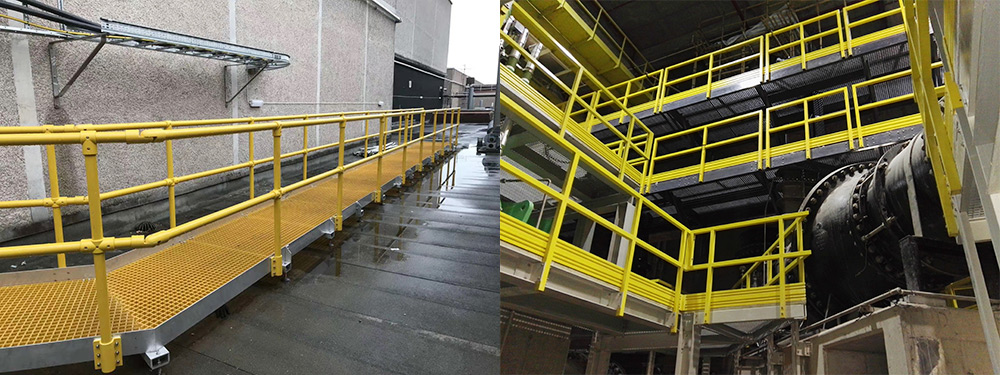
FRP (Fiber Reinforced Plastic) handrails find applications in various industries and environments where a combination of durability, corrosion resistance, and low maintenance is essential. Here are some common applications of FRP handrails:
Industrial Facilities: FRP handrails are widely used in industrial settings such as chemical plants, petrochemical facilities, and manufacturing plants. Their resistance to corrosion makes them suitable for environments where exposure to chemicals is a concern.
Offshore and Marine Structures: The corrosion-resistant properties of FRP make it a preferred choice for handrails on offshore platforms, marine structures, and coastal facilities. FRP handrails withstand exposure to saltwater and harsh weather conditions.
Water Treatment Plants: FRP handrails are used in water treatment plants where resistance to chemical corrosion is crucial. They provide safety for workers and visitors navigating around treatment tanks and processing areas.
Power Generation Facilities: In power plants, especially those using coal or other corrosive materials, FRP handrails are employed for safety on walkways, platforms, and staircases. The non-conductive nature of FRP is beneficial in electrical environments.
Commercial and Institutional Buildings: FRP handrails are used in commercial and institutional buildings, including hospitals, schools, and public spaces. They offer a durable and low-maintenance solution for staircases, ramps, and balconies.
Transportation Infrastructure: FRP handrails can be found in transportation infrastructure such as bridges, walkways, and railway platforms. Their lightweight nature and resistance to environmental conditions make them suitable for these applications.
Wastewater Treatment Plants: Similar to water treatment plants, wastewater treatment facilities utilize FRP handrails for safety in corrosive environments. The material’s resistance to chemical exposure is crucial in these settings.
Theme Parks and Entertainment Venues: FRP handrails are used in amusement parks and entertainment venues for safety on rides, walkways, and elevated platforms. Their ability to resist weathering and corrosion is advantageous in outdoor settings.
Food Processing Facilities: In the food industry, where hygiene is a priority, FRP handrails are chosen for their resistance to corrosion and ease of cleaning. They are commonly used in processing areas and walkable platforms.
Mining and Mineral Processing: FRP handrails are employed in mining operations and mineral processing plants, providing safety on walkways, stairs, and platforms in environments with exposure to minerals and chemicals.
When considering FRP handrails for a specific application, it’s essential to assess the environmental conditions, safety requirements, and any applicable industry standards to ensure the chosen handrail system meets the necessary criteria.
